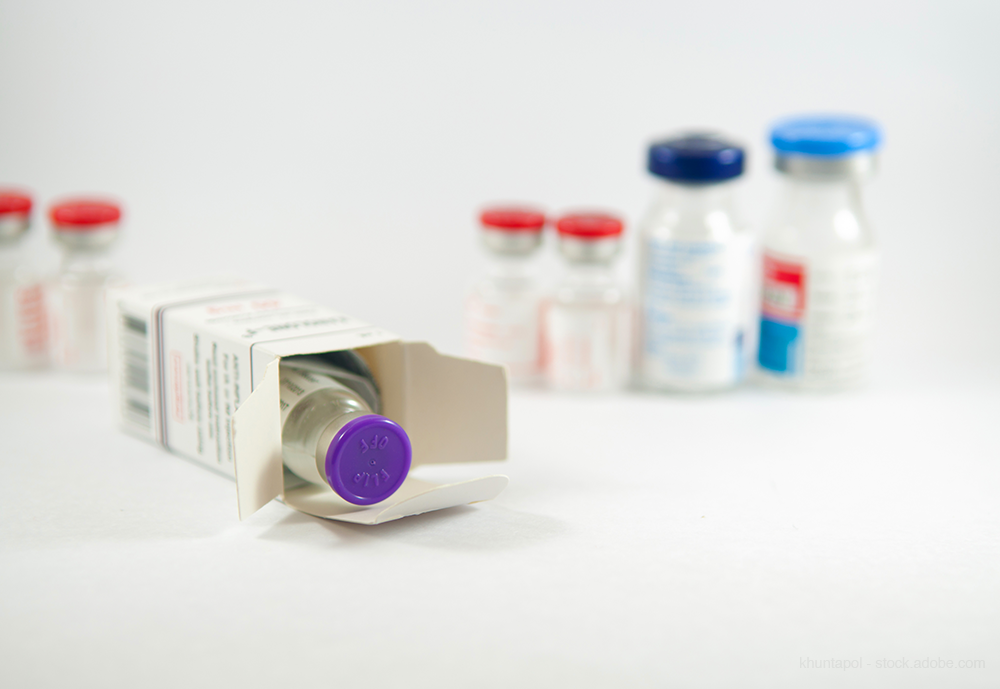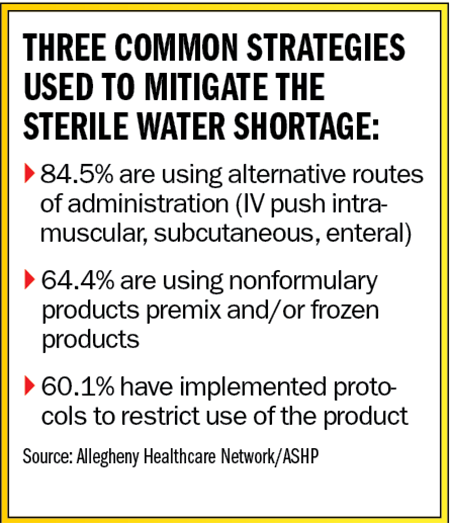Hospital Pharmacists Struggle with Sterile Water for Injection Shortage
How one health system is coping is coping with the shortages.

Shortages related to last year’s hurricane in Puerto Rico have extended beyond drugs. Manufacturers that produce IV products there, including sterile water for injection, are struggling to get back up to speed. Some U.S. hospitals have not received this vital product since December 2017.
In January, the FDA added sterile water for injection to its Drug Shortages Database. Almost 100% of respondents to a recent ASHP survey reported that their hospital has been affected by the small volume parenteral shortage.
Related article: Months Later, Drug Shortages Still a Problem
Ninety-seven percent indicated the shortage has been severe (61%) or moderate, (35.3%). Severe was defined as having “impacted daily operations and patient care.” Some hospitals have initiated strategies to ease the impact of the shortage [see table].

How to Deal
At Pittsburgh-based Allegheny Healthcare Network (AHN), 10-mL vials of sterile water for injection have been hard to come by. Laura Mark, PharmD, vice president for pharmacy at AHN, says that the use of those vials increased after the network converted IV drug infusions to “IV push” because of the ongoing shortage of small parenteral solutions.
To address the shortage ANH has also implemented the following initiatives:
- Evaluate a return to IV infusion via minibag for drugs whose mode of delivery, because of the shortage of small-volume parenteral solutions, had become IV pus via syringe.
- Convert the mode of drug reconstitution for IV products from sterile water for injection to 0.9% sodium chloride injection, when possible.
- Conserve the 10-mL sterile water vials for drugs that can only be reconstituted with sterile water and cannot be reconstituted with 0.9% sodium chloride injection.
In recent days, Mark says the health system has gotten some relief in part because the FDA is working with manufacturers to allow shipments from other countries.
Related article: Pharmacy Supply Lines Are Still Shaking After Storm Passes
One of the biggest challenges, says Mark, has been how to communicate the sudden change in practices with staff. “We were fortunate because we had the support of senior leadership. We created a centralized approach for communicating the shortages and our strategies throughout the network, so everybody knew what the plan was and what adjustments we were making.”
Mark says that the pharmacy department also worked closely with the IT department, internal procurement, and provider services.
Learning Experience
A key takeaway from the shortage, says Mark, is the importance of getting support from senior leadership right from the beginning. "Communication is the key and having a mechanism to send out that message about what we were doing so that everybody could help. What I was pleased and proud about was how well the organization came together as a whole and put patient care as the number one priority.”